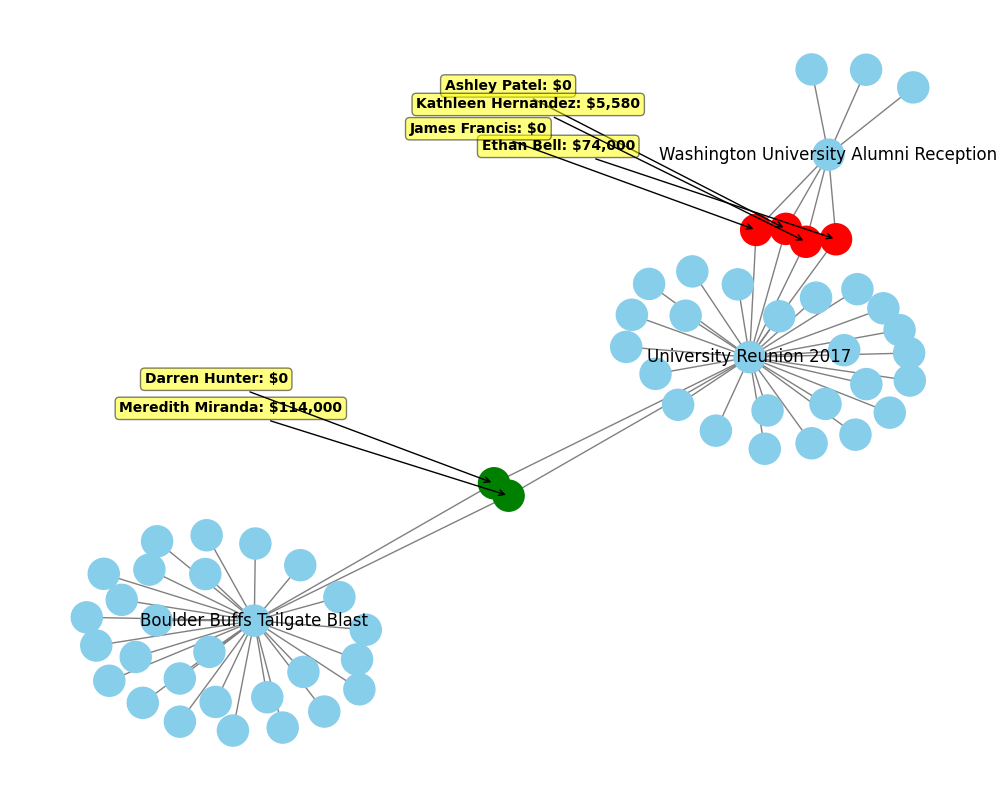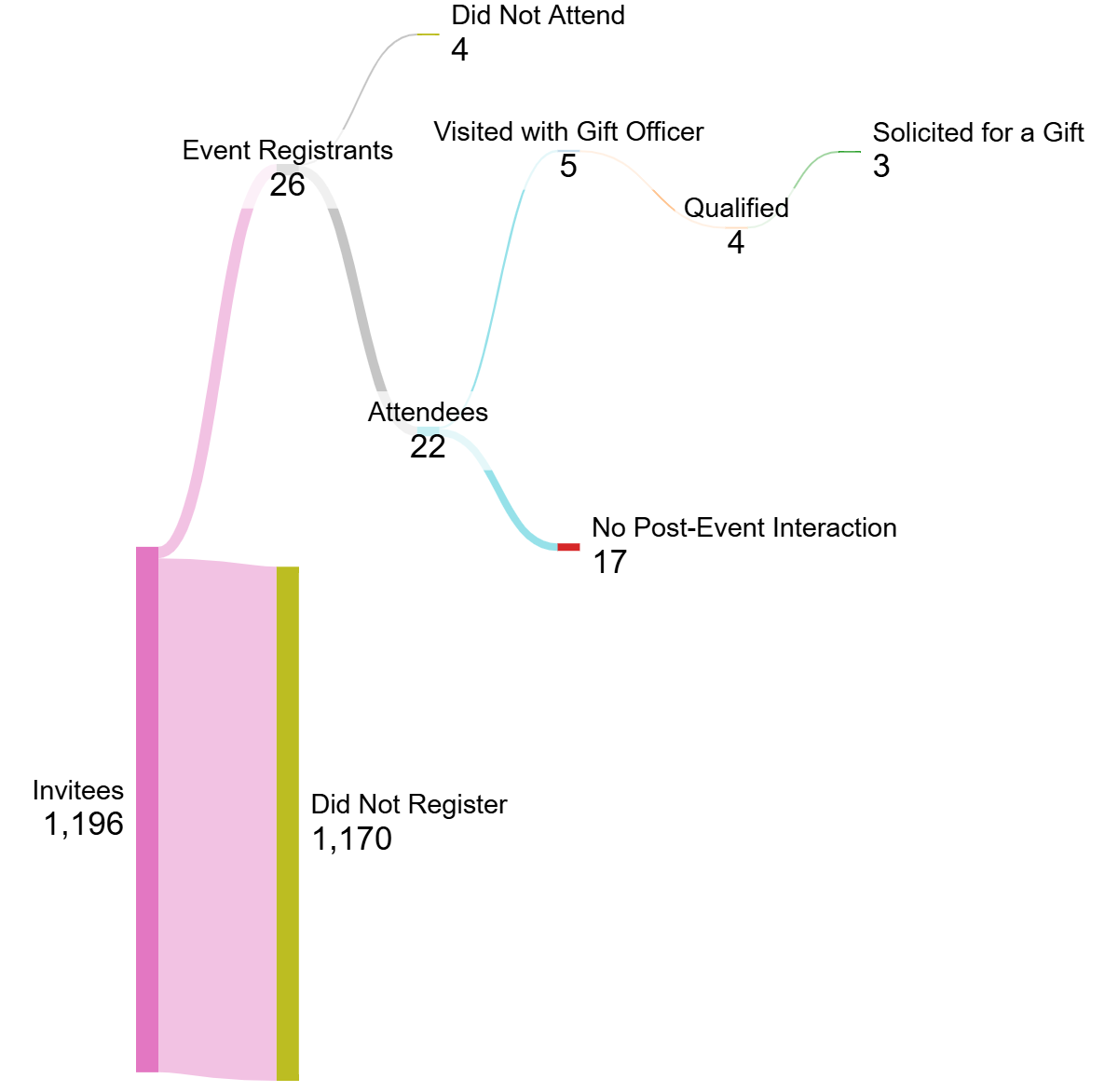Data Science · Predictive · Analytics · Reporting
Don’t Overlook Your Organization’s Events Data
By Andrew Gutierrez | June 26, 2025
For those of us in the prospect research and development (PR&D) world, external prospect data has become a key part of our day-to-day work lives. Researchers today are versed in a wide variety of external tools and services, using them to access public data like Securities and Exchange Commission SEC filings, real estate holdings, wealth estimates and more. Inevitably, just about any conversation between colleagues in our field will turn at some point to “What external data sources are you using?”
But what if some of the most valuable sources of data on your prospects weren’t external at all, but rather were already inside your organization? It’s easy to forget, but data can be found in just about every nook and cranny across a typical fundraising department — digital communications data (e.g., email opens and clicks) and constituent appeal responses are often utilized by prospect research teams, for example. There’s one internal data source you may not have thought of before that can be a rich treasure trove of information: your organization’s event attendance data. If your fundraising shop has a dedicated team for running events, that team likely keeps track of which individuals attend each event that they put on.
Coming on the heels of Apra Content Development Committee Chair Jennifer Moody’s events-focused Connections publication from earlier this year, this article will detail several ways you can utilize your organization’s event attendance data to support your PR&D team’s work.
Relationship Mapping
We’ve all heard the phrase “it’s not what you know, it’s who you know.” Never has this adage been more applicable than in the fundraising world, where mutual connections are often leveraged to help engage prospective donors. Many prospect research teams have invested in external services that provide information on who else their prospects might know, with corporate and civic board membership data frequently utilized as well as employer-based professional data sourced from social networks like LinkedIn.
Event attendance data can provide a powerful internal supplement to this information. Plot out your events data, and you’ll likely start to notice some relationships you may not have known about — major donor X attending two separate salon events with prospective donor Y for example, or board member Y volunteering at a community fundraising event alongside new prospect Z. Let’s use as an example the social network analysis diagram shown above, in which three separate events and their participants are displayed. We can see that individuals Darren Hunter and Meredith Miranda (colored in green) attended both the “University Reunion 2017” and “Boulder Buffs Tailgate Blast” events together, while individuals Ashley Patel, Kathleen Hernandez, James Francis, and Ethan Bell (colored in red) all attended both the “University Reunion 2017” and “Washington University Alumni Reception” events. And given Miranda’s relatively high lifetime giving ($114,000), she may be a good connector to try to engage Hunter, who hasn’t given before.

Determining Affinity
It should come as no surprise that event attendance data can be used for determining an individual’s affinity for your organization. After all, what is affinity if not taking time out of one’s schedule to attend an event? As Chris Copsey detailed in his recent Apra Connections article “Affinity Scores: Ranking Prospect Engagement for Improved Strategy,” affinity models can be a powerful complement to standard wealth screening scores. While it’s one thing to know how much an individual theoretically could donate, being able to measure that individual’s actual level of interest in your organization is arguably an even more powerful insight.
Downstream from affinity, of course, is an individual’s giving history. While I obviously can’t peek into your organization’s data, allow me to still make a reasonably confident prediction about it: constituents who attend your organization’s events are going to be more likely to give to your organization, compared to constituents who don’t attend your events. There are a few ways you could set up your own analysis to confirm this.
Take a sample of past donors to your organization for example, then look at the number of events they attended prior to making their first gift (try to avoid including events that are exclusive to donors in these types of analyses; their inclusion can obviously skew your findings and render them less helpful). Performing a logistic regression analysis on this data will illuminate the relationship between the number of events your constituents attend, and whether each constituent went on to donate. Assuming the results of your analysis bear out, event attendance can be a powerful new data point to include in your organization’s prospect affinity model.
Connect to Your Moves Management Data
Anytime we can stitch two data sources together to see how one impacts the other, impressive insights are going to result. In this case, one more valuable thing you can do with your event information is connect it to your moves management data. If one of your fundraising department’s goals in hosting events is to engage, qualify and ultimately solicit major gift prospects, it can be helpful to look at how many constituents who attend your events go on to enter the moves management cycle. If an individual had their first engagement with your organization at a particular event, went on to be visited and qualified by a gift officer within that same year, and within another year had been solicited to make a gift to your organization, that is extremely helpful information for evaluating your events program’s impact.

A Sankey diagram like the one shown above can be used to visualize which individuals who attended an event end up flowing through your moves management stages. In this example, of 22 individuals who attended an event, five later had a visit with a gift officer within that same year; four of those individuals were qualified; and three of them were ultimately solicited for a gift within two years of the event.
This is by no means an exhaustive list of what you can do with your events data — a quick perusal of the Exchange will likely turn up even more examples. So, the next time you find yourself wishing you had more data on your organization’s prospects, you just might want give your events team a call.

Andrew Gutierrez
Philanthropy Data Scientist, Cleveland Clinic
Andrew Gutierrez is a Chicago-based philanthropy data scientist who has worked in the fundraising space since 2018. He has held a variety of roles, including systems analyst and data scientist at Cleveland Clinic's Philanthropy Institute and associate director of development operations at Northwestern University's Feinberg School of Medicine. Gutierrez has also been the vice president of Apra Illinois since 2025. His main professional focus has been on leveraging data and technology to support organizations’ advancement efforts, with a particular focus on creating statistical models for identifying and segmenting prospects, quantifying prospect capacity and affinity and forecasting gift outcomes.